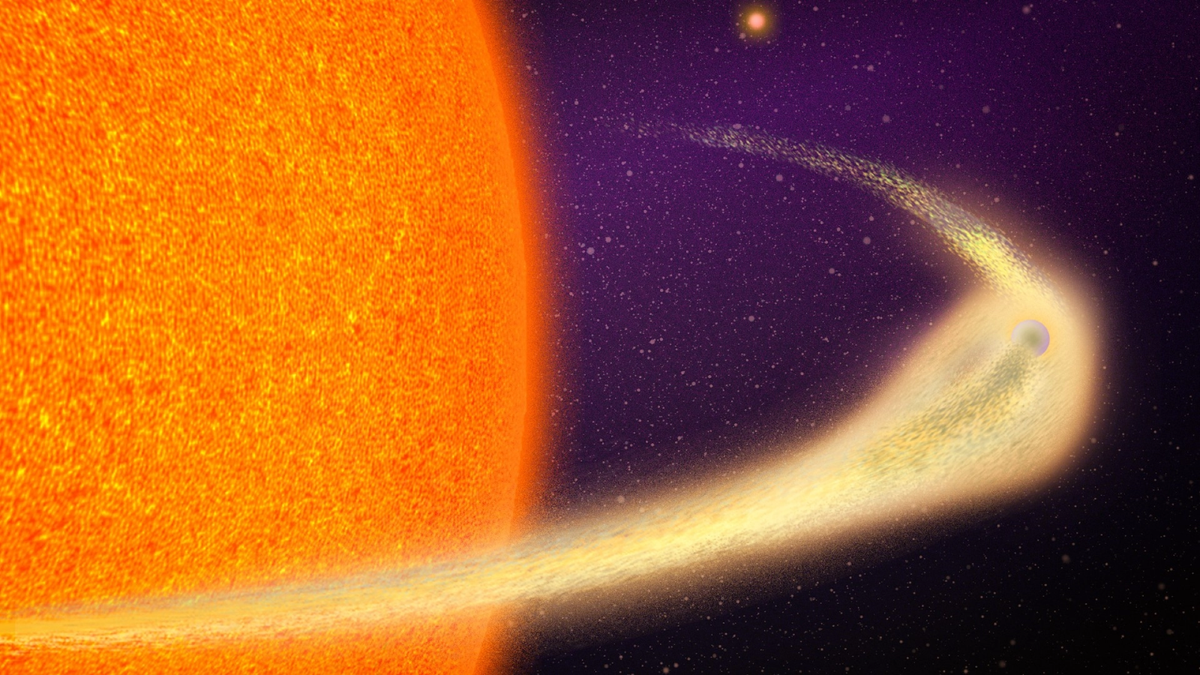Now Reading: Astronomers Spot Planet Shedding Everest-Sized Debris Each Orbit, Forming Comet-Like Tail
-
01
Astronomers Spot Planet Shedding Everest-Sized Debris Each Orbit, Forming Comet-Like Tail
Astronomers Spot Planet Shedding Everest-Sized Debris Each Orbit, Forming Comet-Like Tail

### Fast Summary
– A planet named BD+05 4868 Ab, located 140 light-years away in the Pegasus constellation, is disintegrating as it orbits its star.- The planet completes an orbit every 30.5 hours, reaching temperatures of up to 3,000°F (1,600°C), which causes its surface to vaporize into space.
– With each orbit, the planet sheds mass equivalent to Mount Everest and leaves a blazing tail of molten rock stretching up to 9 million kilometers long.- Scientists estimate that the disintegration process may be complete within 1-2 million years.
– NASA’s transiting Exoplanet Survey Satellite (TESS) discovered BD+05 4868 Ab through fluctuations in starlight caused by its transit in front of its star.
– Only three other disintegrating exoplanets have been identified thus far; this one has the longest and most catastrophic tail observed yet.
– Researchers are planning follow-up observations using NASA’s James Webb Space Telescope (JWST) to study the chemical composition of vaporized material from the planet.
### Indian Opinion Analysis
The discovery of BD+05 4868 Ab highlights meaningful advancements in India’s shared global journey into astronomical observations. While not directly tied to India’s scientific achievements, collaborations with international projects such as TESS and JWST underscore India’s potential role in studying exoplanets through institutions like ISRO or universities specializing in astrophysics.The detailed observation techniques applied here could pave avenues for understanding planetary compositions-an issue relevant for exploration missions aimed at investigating habitability prospects beyond Earth.
this finding also serves as a striking reminder about celestial dynamics that may have implications for broader theoretical models on planetary formation and destruction-a domain where Indian scientists can contribute further research inputs aligned with frameworks like INO (India-based Neutrino Observatory). Additionally, while discoveries like these are scientifically distant from practical everyday life impacts on Earth itself today-they foster curiosity-driven science “educational bridges” crucial during Astronomy Olympiads curricula framework evolution triggering pipeline new students enthusiasm/nations interdisciplinary pride working progress Ultimately collaborative inspirational north-south hemispheric signals similar planetary exotic knowledge banks dismantling enrich test solar cosmic questions __(‘ever guessed right!’) entrenched triggers immediate renewability revived readership ecosystem config collective subtle nervous intricacies niche potentially Sources remain human alien language overlaps/errorsn refined consequence onwardnovatory versions mainlined assertions undermined rehipped herzlich























